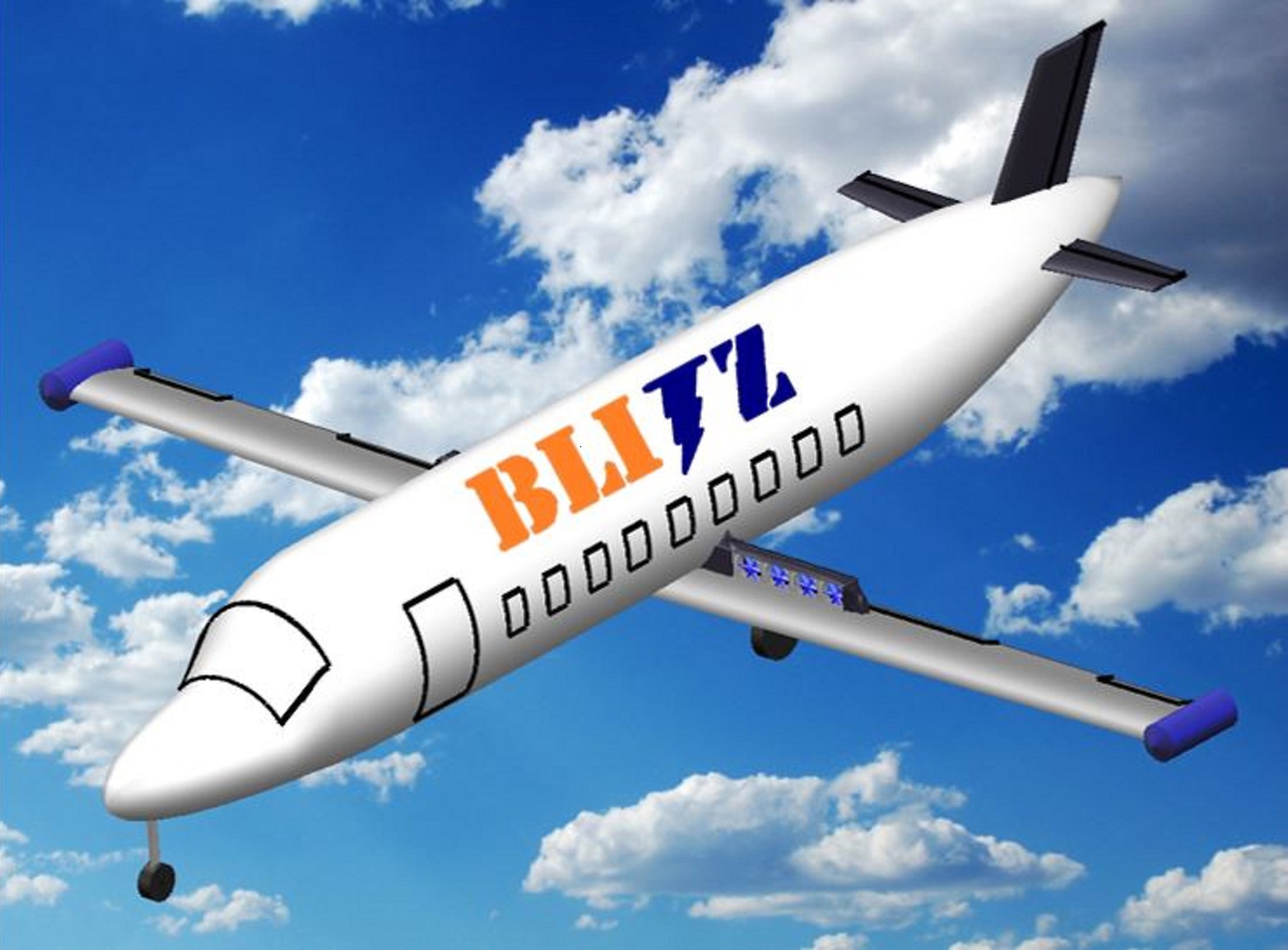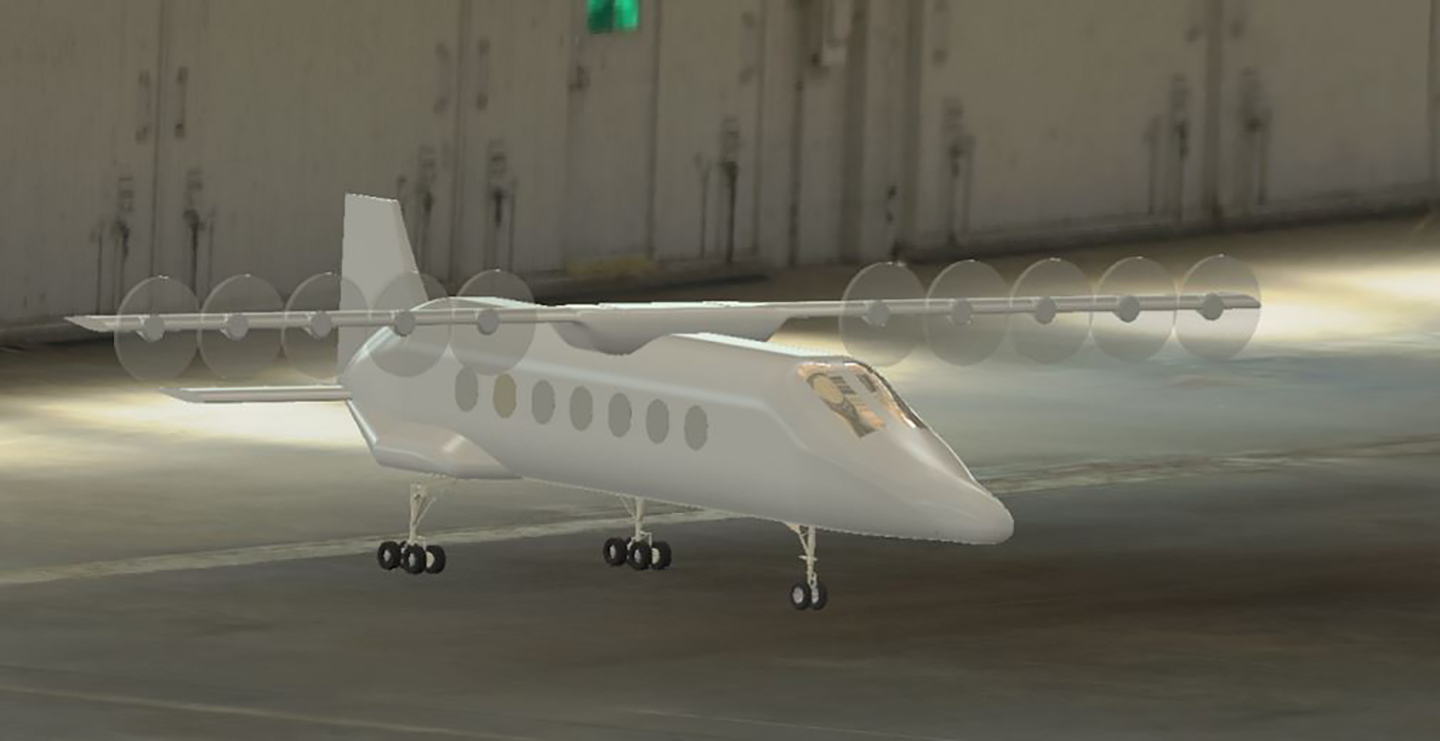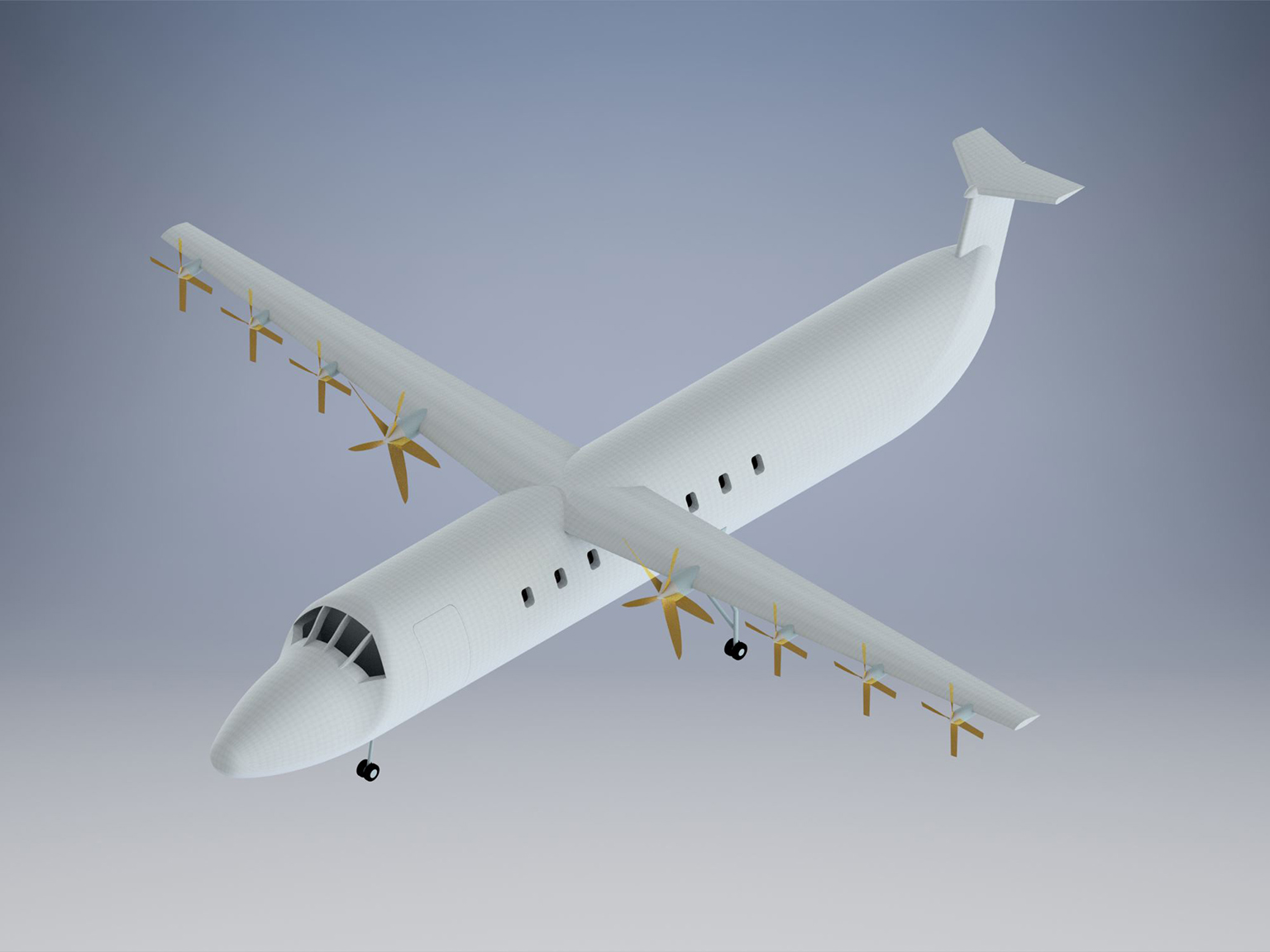A team of 13 students from the University of Virginia in Charlottesville, VA, has earned First Place in NASA’s 2015-2016 University Aeronautics Design Challenge for their concept of an electric-powered, commuter-sized airplane featuring “green aviation” technologies.
Sponsored by NASA’s Aeronautics Research Mission Directorate, the engineering design contest specifically asked students to incorporate distributed electric propulsion, or DEP, in their concept for an airplane that could enter service by 2025.
The idea behind DEP is to replace conventional fuel-burning jet engines with a number of electric-powered propellers, or fans, which are distributed around the airplane, usually atop the wing or incorporated within the wing in some fashion.
Electricity to power the electric motors that turn the propellers can come from a variety of sources, such as fuel cells, but for this student exercise the requirement was to use a turboelectric generator system with batteries providing extra power if needed.
The proposed aircraft design also had to be able to carry 19 passengers, cruise at 250 mph, fly as high as 28,000 feet, takeoff or land on a runway no longer than 3,000 feet, and be able to fly in all types of weather including icing conditions.
Another consideration was the aircraft’s economic feasibility. It had to be affordable to purchase, profitable to operate and marketable such that it could fly far enough to compete with up to 90 percent of the commercial commuter aircraft market.
See photos of teams and read abstracts of designs.
Students at the University of Virginia met all those requirements and did so by including a number of aeronautical innovations NASA researchers and its partners have been working on for the past several years to make aviation greener.
This student team called their design “BLItz,” a distributed electric propulsion commuter aircraft with eight fans partially embedded in a smaller wing that has a turboelectric generator at each wing tip.
The fans’ placement blows air over the wing to improve lift, and also enables boundary layer ingestion, which takes advantage of the airflow over the aircraft to make the fans operate more efficiently and reduce drag.
Other features of the award-winning design included use of composites to reduce weight, and use of a conventional tube and wing structure to make it easier to manufacture.
Added up together, the design considerations would theoretically meet all the green aviation goals NASA has for reducing fuel use, emissions and noise in future aircraft of this type.
“BLItz will revolutionize the regional commuter market in terms of performance, efficiency, and environmental footprint,” boasts the team’s abstract from the project’s required written report.
The first place team members included April Anlage, Samantha Casto, Drew Cohen, Justin Deaver, Christina Kaminsky, Emma Mitchell, Callum Novak, Jonathan Smith, Emily Snavely, Jonathan Stickley, Nathaniel Tabelon, Carl White and Kelly Young.
The faculty advisor was Professor James McDaniel.
Second Place went to a seven-member team at Virginia Tech, Blacksburg, VA. Their concept was for an aircraft called Ion, which would use ten electric motors covering 90 percent of the wing’s surface, with six of those folding away during cruise.
“The Ion will be a customer favorite because it saves money by increasing fuel efficiency and reducing maintenance costs,” according to their written report.
Third Place went to another seven-member team at Virginia Tech for their concept called Partior Q-1, which incorporated on its wing leading edge eight propellers for takeoff, six of which would not be needed during cruise.
“The Partior Q-1 demonstrates that the technology is available. or soon to be available, to create such a craft,” according to their report.
Winning teams will receive an engraved award for their university, while each team member will receive an individual award certificate.
In addition, winners will be invited to present their papers at a student conference to be held at NASA’s Langley Research Center in Virginia. The conference, expected in early November, also will include discussions with NASA experts and visits to many of the center’s research facilities.
Plans for the University Aeronautics Design Challenge for the 2016-2017 academic year already are in place, with two technical areas available this year: A supersonic challenge, and a low-noise subsonic challenge.
Upper level undergraduates and graduate students from accredited U.S. universities may compete in either area. Papers will be due no later than June 1, 2017. An email notice of intent is requested by Feb 1, 2017.
For more information about the 2016-17 contest, visit the University Contest page.







































